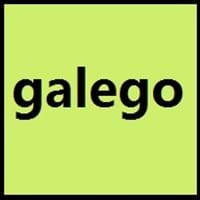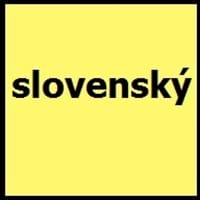Countries
Galicia
Czech Republic, European Union, Serbia, Slovakia
National Language
Galicia
Slovakia, Vojvodina, Serbia
Second Language
Not spoken in any of the countries
Not spoken in any of the countries
Speaking Continents
Europe
Europe
Minority Language
Not spoken in any of the countries
Czech Republic, Hungary, Russia, Ukraine
Regulated By
Royal Galician Academy (Real Academia Galega)
Ministry of Culture of the Slovak Republic
Interesting Facts
- In Galician language, there are no compound tenses.
- The earliest document in Galician language was written in 1228 which was legal charter for a municipality of Galicia.
- Slovak language was written using Glagolitic Alphabets,in 1843.
- Until the end of 18th century, Slovak did not exist as written language.
Similar To
Portuguese Language
Czech Language
Derived From
Latin
Czech-Slovak Language
Alphabets in
Galician-Alphabets.jpg#200
Slovak-Alphabets.jpg#200
Writing Direction
Left-To-Right, Horizontal
Left-To-Right, Horizontal
Language Levels
Not Available
Time Taken to Learn
Not Available
Thank You
Grazas
Ďakujem vám
How Are You?
Que tal estás?
Ako sa máte?
Good Night
Boas noites
Dobrú noc
Good Evening
Boa tarde
Dobrý večer
Good Afternoon
Boa tarde
Dobré popoludnie
Good Morning
Bos días
Dobré ráno
I Love You
Ámote
Ľúbim Ťa
Excuse Me
Perdoe!
Prepáčte!
Dialect 1
Eastern Galician
Eastern Slovak
Where They Speak
East Galicia
Abov, Saris, Spis, Zemplin
Dialect 2
Central Galician
Central Slovak
Where They Speak
Central Galicia
Gemer, Hont, Liptov, Novohrad, Orava, Tekov, Turiec
Dialect 3
Western Galician
Western Slovak
Where They Speak
West Galicia
Kysuce, Nitra, Trencin, Trnava, Zahorie
Speaking Population
Not Available
Not Available
Native Name
Galego
slovenčina
Alternative Names
Galego, Gallego
Slovakian, Slovencina
French Name
galicien
slovaque
German Name
Galicisch
Slowakisch
Pronunciation
[ɡaˈleɣo]
Not Available
Ethnicity
Not Available
Slovaks
Origin
c. 1175
6th Century
Language Family
Indo-European Family
Indo-European Family
Subgroup
Not Available
Slavic
Branch
Not Available
Western
Early Forms
Medieval Galician
Proto-Slavic
Standard Forms
Galician
Slovak
Signed Forms
Not Available
Not Available
Scope
Individual
Individual
ISO 639 6
Not Available
Not Available
Glottocode
gali1258
slov1269
Linguasphere
51-AAA-ab
53-AAA-db
Language Type
Living
Living
Language Linguistic Typology
Not Available
Subject-Verb-Object
Language Morphological Typology
Not Available
Synthetic
All Galician and Slovak Dialects
Most languages have dialects where each dialect differ from other dialect with respect to grammar and vocabulary. Here you will get to know all Galician and Slovak dialects. Various dialects of Galician and Slovak language differ in their pronunciations and words. Dialects of Galician are spoken in different Galician Speaking Countries whereas Slovak Dialects are spoken in different Slovak speaking countries. Also the number of people speaking Galician vs Slovak Dialects varies from few thousands to many millions. Some of the Galician dialects include: Eastern Galician, Central Galician. Slovak dialects include: Eastern Slovak , Central Slovak. Also learn about dialects in South American Languages and North American Languages.
Galician and Slovak Speaking population
Galician and Slovak speaking population is one of the factors based on which Galician and Slovak languages can be compared. The total count of Galician and Slovak Speaking population in percentage is also given. The percentage of people speaking Galician language is Not Available whereas the percentage of people speaking Slovak language is Not Available. When we compare the speaking population of any two languages we get to know which of two languages is more popular. Find more details about how many people speak Galician and Slovak on Galician vs Slovak where you will get native speakers, speaking population in percentage and native names.
Galician and Slovak Language Codes
Galician and Slovak language codes are used in those applications where using language names are tedious. Galician and Slovak Language Codes include all the international language codes, glottocodes and linguasphere.





